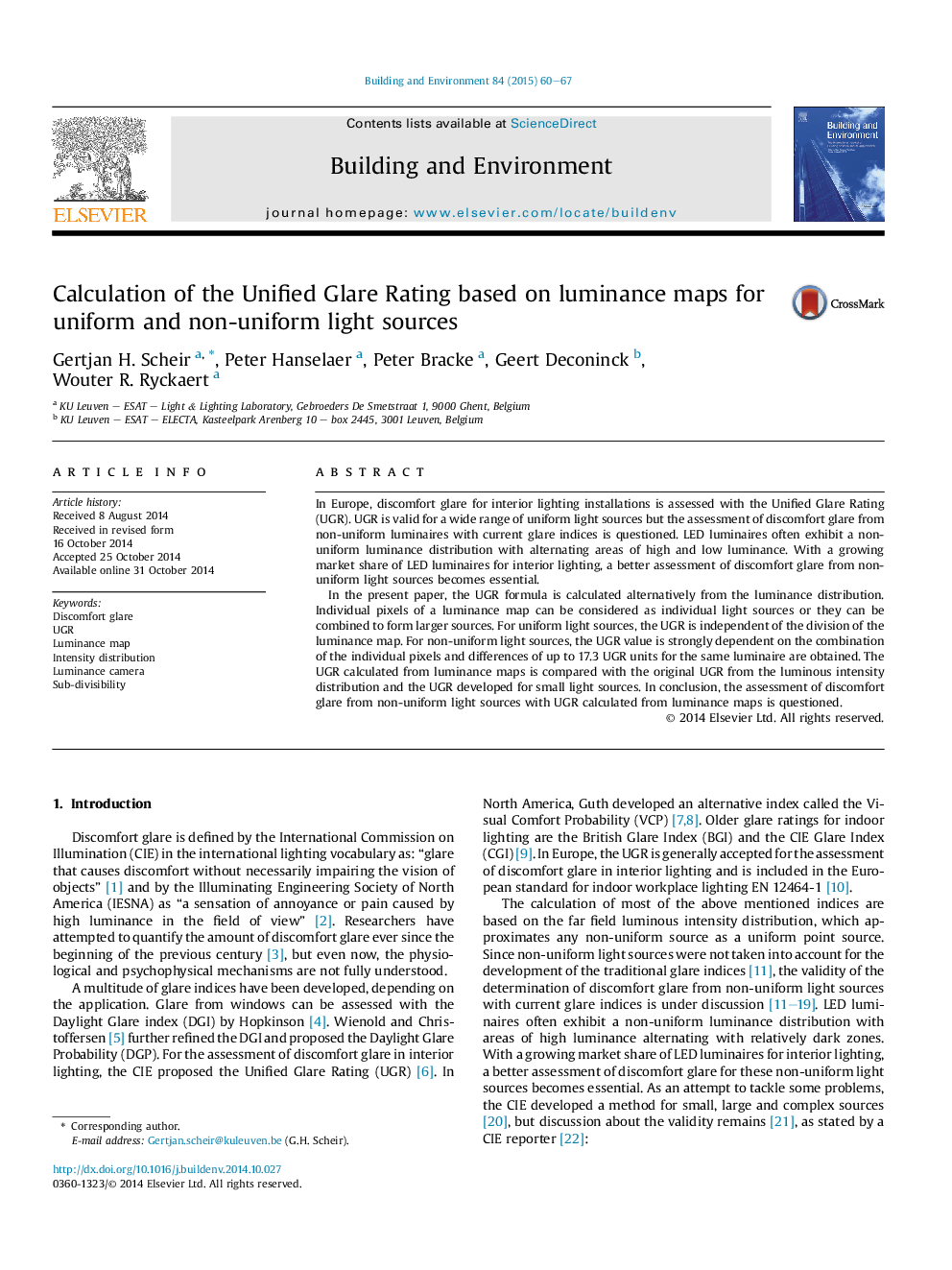| Article ID | Journal | Published Year | Pages | File Type |
|---|---|---|---|---|
| 247977 | Building and Environment | 2015 | 8 Pages |
•The Unified Glare Rating (UGR) is calculated based on luminance maps.•The effect of different divisions of the luminance map on the calculated UGR value is studied.•For uniform luminaires, variations in UGR are smaller than 3 UGR units.•For non-uniform luminaires, variations in UGR are larger than 9 UGR units.•UGR calculation based on luminance maps is not robust for non-uniform light sources.
In Europe, discomfort glare for interior lighting installations is assessed with the Unified Glare Rating (UGR). UGR is valid for a wide range of uniform light sources but the assessment of discomfort glare from non-uniform luminaires with current glare indices is questioned. LED luminaires often exhibit a non-uniform luminance distribution with alternating areas of high and low luminance. With a growing market share of LED luminaires for interior lighting, a better assessment of discomfort glare from non-uniform light sources becomes essential.In the present paper, the UGR formula is calculated alternatively from the luminance distribution. Individual pixels of a luminance map can be considered as individual light sources or they can be combined to form larger sources. For uniform light sources, the UGR is independent of the division of the luminance map. For non-uniform light sources, the UGR value is strongly dependent on the combination of the individual pixels and differences of up to 17.3 UGR units for the same luminaire are obtained. The UGR calculated from luminance maps is compared with the original UGR from the luminous intensity distribution and the UGR developed for small light sources. In conclusion, the assessment of discomfort glare from non-uniform light sources with UGR calculated from luminance maps is questioned.
